
Hanuman stands as a symbol of unwavering devotion, immense strength and fearless courage in Hindu tradition. Known as the Monkey God and the devoted companion of Bhagwan Ram, Hanuman’s legendary feats include leaping across oceans, battling formidable demons and rescuing Ram’s brother Lakshman from the brink of death. Born through divine intervention and blessed by the gods with extraordinary powers, Hanuman embodies physical might and spiritual wisdom. His stories, celebrated in the Ramayana and revered in countless rituals, continue to inspire those seeking protection, resilience and single-minded devotion.
History of Hanuman
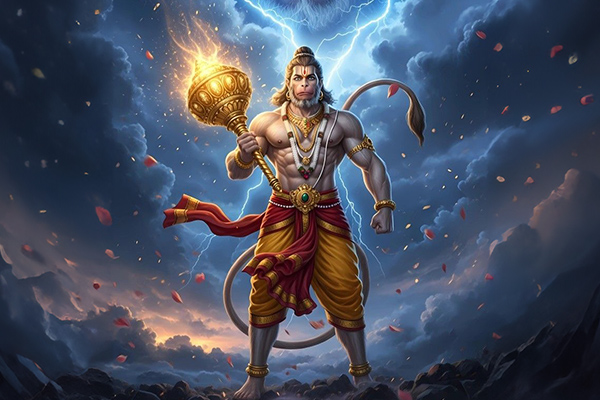
Hanuman’s story begins with a powerful act of destiny. Anjana, once a celestial nymph, is transformed into a monkey and seeks deliverance through deep devotion. Her prayers are answered when Vayu, the wind god, carries Shiva’s blessing to her, resulting in the miraculous birth of Hanuman. From his first breath, Hanuman is marked by extraordinary gifts-strength, speed and intelligence that set him apart as a child of divine promise.
His childhood is filled with wonder and mischief, reflecting a spirit unbound by fear. In a moment of playful hunger, Hanuman mistakes the sun for a ripe fruit and soars skyward, only to be struck down by Indra’s thunderbolt. This act draws the intervention of Vayu, who, in his grief, withdraws air from the world. The gods, moved by compassion, restore Hanuman and grant him even greater powers, shaping him into a figure capable of legendary feats.
Hanuman’s journey in the Ramayana transforms him from a gifted child into a hero of unwavering loyalty. Meeting Ram and Lakshman, he pledges his service and quickly becomes indispensable. His daring leap across the ocean to Lanka is a testament to his courage, while his encounter with Sita demonstrates his
compassion and wisdom. Captured and threatened in a foreign land, Hanuman turns adversity into triumph, using his powers to escape and ignite hope by setting Lanka aflame.
On the battlefield, Hanuman’s devotion reaches its peak. When Lakshman falls, Hanuman’s determination drives him to the Himalayas, where, unable to identify the life-saving Sanjeevani herb, he carries the entire mountain back, ensuring victory and healing. His actions are not just heroic, they are acts of selfless love and service.
Hanuman’s legacy endures far beyond the pages of ancient scripture. He stands as a symbol of devotion, humility and inner strength, inspiring millions to overcome obstacles with faith and courage. In homes and temples across India, his image is a reminder that true greatness lies in service, resilience and unwavering commitment to a higher purpose.
While early texts celebrate his strength and role as a messenger and warrior, later works such as the Ramcharitmanas, an epic poem composed by the 16th-century Indian bhakti poet Tulsidas elevate him as the embodiment of devotion and spiritual ideals, portraying him as the perfect devotee.
Over centuries, Hanuman’s character expanded in folklore and regional traditions, often depicting him as an immortal sage and a source of wisdom. Today, Hanuman is widely worshipped as a protector and symbol of strength, with his presence prominent in temples, festivals and popular culture across India.
Divine Boons and Powers
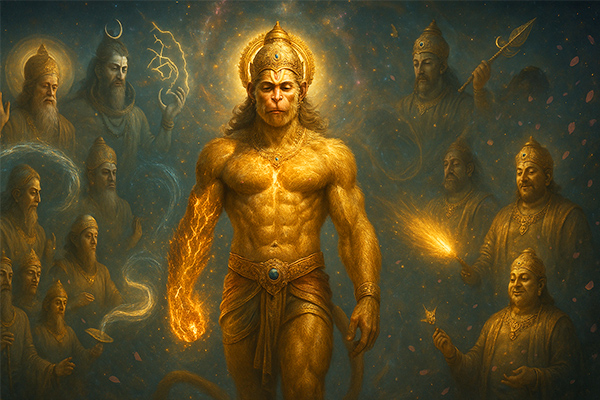
In recognition of his divine nature and as an apology for Indra’s thunderbolt, the gods endowed Hanuman with incredible powers:
- Brahma granted him immunity from his own curse, freedom from fear, the ability to change form at will, and invincibility.
- Shiva blessed him with mastery over scriptures and the ability to cross the ocean.
- Indra made him stronger than the thunderbolt and immune to its power.
- Varuna made him safe from water.
- Agni granted immunity from fire.
- Surya gifted him with the siddhis of Laghima (ability to become light and small) and Garima (ability to become heavy and large).
- Yama, the god of death, granted him immortality and protection from his weapons.
- Pavan, his father, made him faster than the wind itself.
- Kubera, god of wealth, blessed him with eternal contentment and joy.
- Vishwakarma, the divine architect, gave him protection from all weapons and objects.
- Kamadeva, the god of love, made him immune to sensual temptations and affirmed his eternal celibacy, earning him the name Bala Brahmachari.
The Curse of Forgetfulness
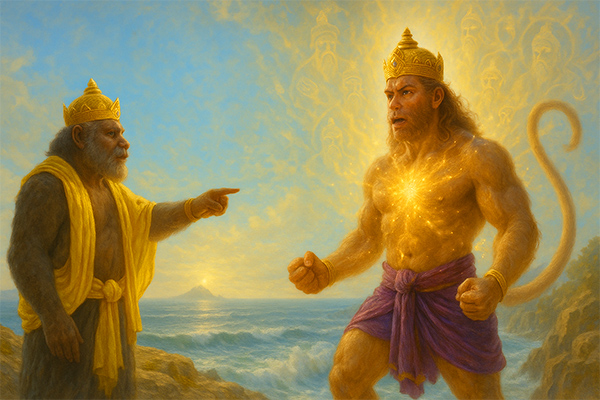
In his childhood, Hanuman's mischievous behavior disturbed many sages. To restrain him, Brahma placed a gentle curse that made Hanuman forget his own powers. These powers would return only when someone reminded him. This occurred during the Ramayana when Jambavan urged Hanuman to leap across the ocean to Lanka.
Main Feats in the Ramayana
Hanuman’s devotion to Rama was expressed through extraordinary acts during the Ramayana :
He crossed the ocean to reach Lanka, cleverly bypassing the demoness Sursa by altering his size. He defeated Lankini, the guardian of Lanka, and located Sita.
Captured by Ravana’s forces, he used the opportunity to deliver Rama’s message. When his tail was set on fire, he escaped and set Lanka ablaze. He fought Meghnath in battle. To save Lakshman, he flew to the Himalayas, and unable to identify the Sanjeevani herb, carried the entire Dronagiri Mountain back.
He delayed sunrise by halting Surya’s movement to ensure Lakshman could be treated in time. To rescue Rama and Lakshman from Patala, he took the Panchamukha form and defeated Makar Dhwaja, a being born from his sweat.
Embodiment of Devotion
After Rama’s return to Ayodhya, Sita offered Hanuman a jeweled necklace. He
respectfully declined and opened his chest to show Rama and Sita within, proving his absolute devotion and spiritual surrender.
Benefits of Worshipping Hanuman
Worshipping Hanuman offers a range of powerful benefits that support both spiritual and practical aspects of life. Devotees find protection from negative energies and harmful influences, creating a sense of security and peace.
Hanuman’s blessings are known to boost courage and confidence, helping individuals face challenges with determination. Regular worship helps remove fears, doubts and mental obstacles, fostering a resilient mindset. It also brings relief from stress and anxiety, promoting emotional balance and inner calm.
Hanuman inspires greater focus, discipline and determination, which are essential for achieving goals. His worship is associated with improved physical health and vitality, supporting overall well-being. Most importantly, devotion to Hanuman encourages loyalty, unwavering faith and spiritual growth, making him a guiding force for strength and perseverance in daily life.
Main benefits include:
- Increased courage and confidence
- Protection from negative energies and evil influences
- Removal of fears, doubts and mental obstacles
- Enhanced focus, discipline and determination
- Inspiration for devotion, loyalty and spiritual growth
- Improved physical health and vitality
- Relief from stress and anxiety
Hanuman Mantras
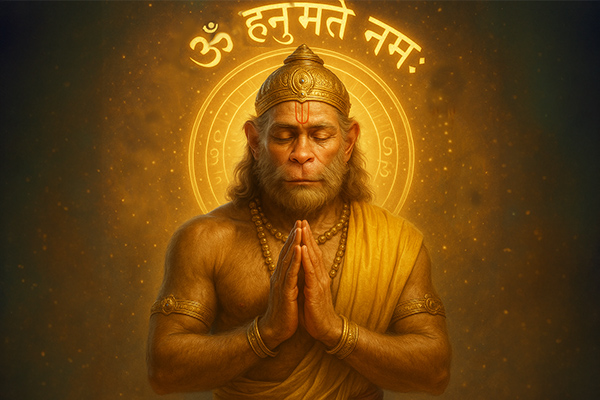
Tuesday and Saturday are the days when devotees worship Hanuman by giving Him special offerings. His hymn called Hanuman Chalisa is chanted to evade troubles and for attaining success. Listen Here: https://youtu.be/grPBXRjCNjs
॥ ॐ हनुमते नमः ॥
“Om Hanumate Namah”
Meaning: Salutations to Hanuman
॥ हं पवन ननदनाय स्वाहा ॥
“Hang Pawan Nandnaay Swaahaa”
Meaning: Salutations to the son of the wind god
॥ ॐ नमो भगवते आंजनेयाय महाबलाय स्वाहा ॥
“Om Namo Bhagvate Aanjaneyaay Mahaabalaay Swaahaa”
Meaning: Salutations to the son of Anjani, the immensely powerful
॥ ॐ तत्पुरुषाय विद्महे ,महादेवाय धीमहि तन्नो रुद्रः प्रचोदयात् ॥
“Om Tatpurushaay Vidmahe ,Mahadevay Dheemahi Tanno Rudrah Prachodayat”
Meaning: We meditate on the supreme being, the great god; may Rudra inspire and guide us
॥ ॐ हं हनुमते रुद्रात्मकाय हुं फट् ॥
“Om Hum Hanumate Rudratamkaya Hoom Phat”
Meaning: Salutations to Hanuman, who embodies the essence of Rudra
॥ ॐ ऐं ह्रीं हनुमते रामदूताय लंकाविध्वंसनाय अंजनी गर्भ संभूताय शाकिनी डाकिनी डाकिनी विध्वंसनाय किलिकिलि बुबुकारेण विभिषणाय हनुमद्देवाय ॐ ह्रीं श्रीं हौं हाँ फट् स्वाहा ॥
“Om Aing Hring Hanumate Ramdutay Lankavidhvansnay Anjani Garbh Sambhutay Shakini Dakini Dakini Vidhvanssnay Kilikili Bubukaren Vibhishanay Hanumaddevay Om Hring Shring Haung Ha Phat Swaha”
Meaning: Salutations to Hanuman, the messenger of Ram, destroyer of Lanka, born of Anjani, destroyer of evil forces, and protector of devotees
॥ ओम् आंजनेयाय विद्मिहे महाबलाय धीमही |तन्नो: हनुमान: प्रचोदयात ॥
“Om Aanjaneya Vidmahe Maha balaya Dhimahi Tanno Hanumatah Prachodayat”
Meaning: We meditate on Anjaneya, the mighty one; may Hanuman inspire and guide us
॥ पवनतनय संकट हरन, मंगल मूरति रूप। राम लखन सीता सहित, हृदय बसहु सुर भूप ॥
“Pavan Tanay Sankat Haran , Mangal Murti Roop. Ram Lakhan Sita Sahit, Hriday Basahu Sur Bhoop”
Meaning: O son of the wind, remover of troubles, embodiment of auspiciousness, may you reside in my heart along with Ram, Lakshman, and Sita
How to Worship Hanuman at Home?
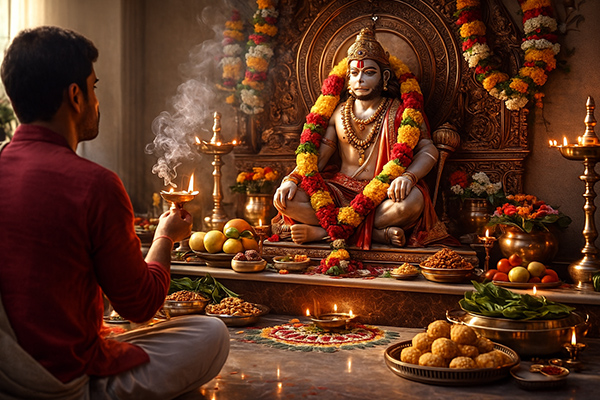
To worship Hanuman at home, begin by choosing a clean and peaceful space, ideally facing east. Set up an altar with an idol or image of Hanuman, decorating it with fresh red or yellow flowers and a garland.
Place essential puja items such as incense sticks, a ghee lamp, sandalwood paste, vermilion, fruits, sweets like besan or boondi laddoos, and betel leaves.
- Start early in the morning after bathing and wearing clean red or yellow clothes
- Take a vow (Sankalpa) to perform the worship with devotion, holding water, rice, and flowers in your right hand, and recite the Sankalpa Mantra
- Invite Hanuman to be present, meditate on his virtues, and chant Hanuman mantras
- Offer a symbolic seat to Hanuman with flowers
- Perform rituals such as washing Hanuman’s feet, offering water mixed with sandalwood and rice, and a symbolic sip of water for purification
- Bathe the idol with Panchamrita (milk, curd, honey, ghee, sugar) followed by pure water
- Dress the idol in new red or orange cloth and offer a sacred thread
- Apply sindoor mixed with jasmine oil, sandalwood paste, and unbroken rice grains
- Offer fresh flowers
- Light incense and a ghee lamp
- Present food offerings such as laddoos, fruits, and a mixture of roasted chickpeas and jaggery
- Include betel leaves and a small monetary offering
Conclude by performing Hanuman Aarti, waving the lamp and singing his praises. Circumambulate the altar three times and offer prostrations. Distribute the offered food (prasadam) among family members, sharing Hanuman’s blessings.
This worship routine is especially auspicious on Tuesdays and during Hanuman Jayanti, but can be performed regularly for strength, protection, and spiritual growth.
Products & Services Associated with Hanuman
Hanuman Idols
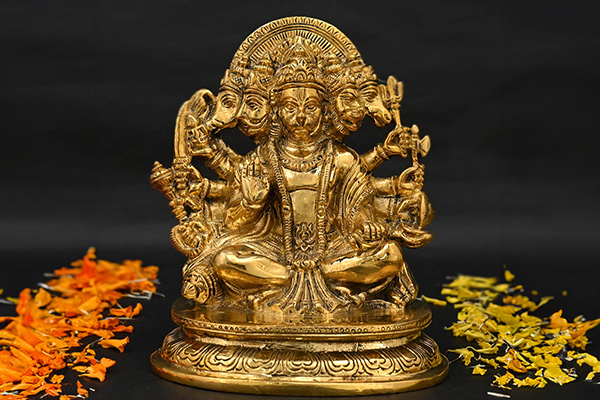
Gemstone Hanuman Idols:
Crafted from natural gemstones like Ruby, Gomedh, Jade, Sapphire, and Crystal Quartz, these idols are revered for their spiritual
significance and aesthetic appeal.
Brass Hanuman Idols:
Skillfully made in brass and fiber with colored stones, these idols symbolize faith, courage, and loyalty. They are energized by priests and suitable for placement in puja altars or living areas.
Panchmukhi Hanuman Brass Idol:
A representation of the five-faced Hanuman, symbolizing his multifaceted powers and protection.
Hanuman Pendants and Lockets
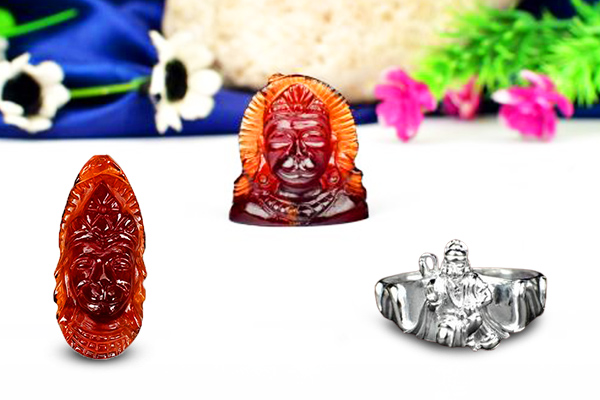
Silver and Gold Hanuman Pendants:
Depicting Bhagwan Hanuman in various forms, including carrying the Sumeru Mountain or sitting with folded hands, these pendants offer physical and mental strength, courage, and protection from evil.
Gemstone Hanuman Lockets:
Intricately carved lockets made from natural gemstones like Coral, Gomed, and Pearl, believed to bring blessings, courage, and financial stability.
Hanuman Rings
Silver Hanuman Rings:
Etched with the image of Bhagwan Hanuman, these rings are designed to provide courage, protection, and strength to the wearer.
Hanuman Kada (Bracelet)
.jpg)
Copper Hanuman Kada: A healing bracelet inscribed with the Hanuman beej mantra “Om Hum Hanumate Namaha” in Hindi text. Wearing copper is believed to offer health benefits and spiritual protection.
Hanuman Yantras
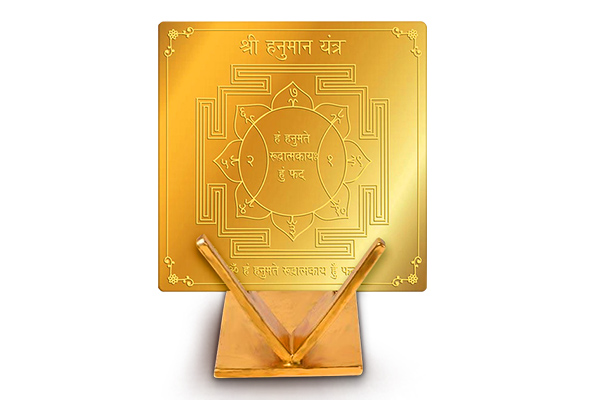
Hanuman Yantra (Brass):
Etched on premium quality heavy brass, available in different sizes and finishes.
Hanuman Yantra in Fine Silver (995):
Crafted in fine silver, this yantra is based on ancient Vedic geometry and is available with or without a wooden frame.
Hanuman Ratna Shakti Yantra:
Artistically embossed on natural Red Aventurine gemstone, promoting balance, creativity, stability, confidence, and strength.
Siddh Meru Hanuman Yantra:
A three-dimensional yantra made of pure copper with an antique finish, suitable for placement in homes or offices.
Hanuman Yantra on Silk with Frame:
Printed on pure silk and enclosed in a pearl white toned frame, ideal for hanging in puja rooms or living spaces.
Hanuman Puja Services
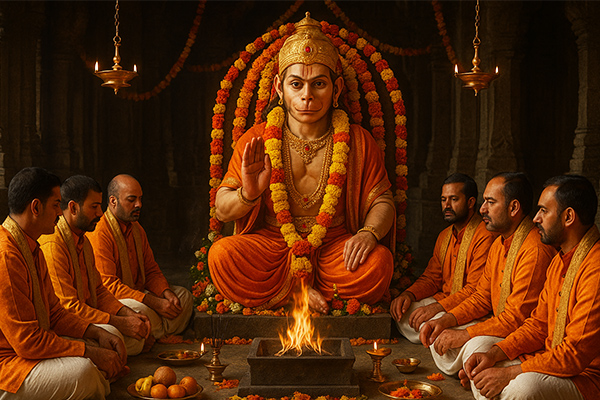
Hanuman Puja for Protection and Valor:
Performed to invoke the blessings of Bhagwan Hanuman for strength, protection, and courage.
Panchmukhi (5 Faced) Hanuman Puja:
Involves 11,000 chants to seek the
blessings of the five-faced Hanuman for protection and overcoming obstacles.
Hanuman Puja for Wish Fulfilment:
Aimed at fulfilling specific desires, attaining success, and removing obstacles in personal and professional life.
Hanuman Gayatri Mantra Japa Yagna and Homam:
Includes chanting of the Hanuman Gayatri Mantra and performing a homam for health, wealth, and protection.
Akhand Ramayana Mahapuja (Hanuman Jayanti):
A 24-hour continuous recital of the Ramcharitmanas, performed on Hanuman Jayanti to seek blessings and remove obstacles.
Hanuman Chalisa Paath (51 times):
Recitation of the Hanuman Chalisa 51 times to invoke Bhagwan Hanuman's blessings for strength and protection.
Conclusion
The Heart of Bhakti: Walking the Path of Hanuman
As the sacred threads of Bhagwan Hanuman’s story weave through the fabric of Sanatan Dharma, they form a tapestry of unmatched spiritual brilliance. He is more than a divine figure remembered in temples and texts. He is a force that awakens the dormant strength within every human soul, a living presence that transcends time, space, and imagination.
Born from the breath of Vayu and the blessing of Shiva, Hanuman enters the world not as a mere vanara, but as a divine spark destined to illuminate the path of righteousness. His early tales are not just myths but living metaphors, teaching that even boundless power requires purpose, and that true greatne
only through humility and devotion. He does not seek glory, yet becomes the very standard of glory. He never asks for honor, yet becomes eternally honored. His greatness is silent, but speaks louder than any triumph.
When Hanuman meets Bhagwan Rama, something beyond divine destiny unfolds, a meeting of pure devotion with the Supreme Self. That bond becomes the cornerstone of the Ramayana’s spiritual essence. In every mission, in every battle, and in every sacrifice, Hanuman does not act for himself, he acts as the instrument of divine will, merging personal power with cosmic purpose.
But it is not just what Hanuman does that defines him, it is what he represents. In him lives the tireless courage to face the impossible, the clarity to act without hesitation, and the purity of love that expects nothing in return. He does not belong only to the past; he belongs to every moment when fear must be overcome, when duty must be upheld, and when the soul must choose love over ego.
His legacy is etched not just in sacred verses, but in the beating hearts of those who call upon him with sincerity. For the student facing obstacles, Hanuman is the giver of wisdom. For the devotee struggling with doubt, he is the guardian of faith. For the soul yearning for strength, he is the breath of fearlessness. His presence flows wherever truth, loyalty, and devotion are alive.
In today’s restless world, filled with noise and uncertainty, the image of Hanuman offers not just inspiration but transformation. His life is a mirror reflecting our highest potential, to serve without pride, to fight without hatred, and to love without limit. He reminds us that divinity is not a distant ideal but a force we can live through action, discipline, and surrender.
To remember Hanuman is to awaken the might that lies dormant in the soul. To follow his example is to walk a path where every step becomes sacred, every challenge becomes a chance for growth, and every heartbeat becomes an offering to something greater than the self. In him, we do not just find a protector or a guide, we find the gateway to becoming fearless, unwavering, and free.
Hanuman is not the past. He is the eternal fire of devotion, burning bright within all who dare to walk the path of truth, service, and divine love.


-in-Astrology.jpg)
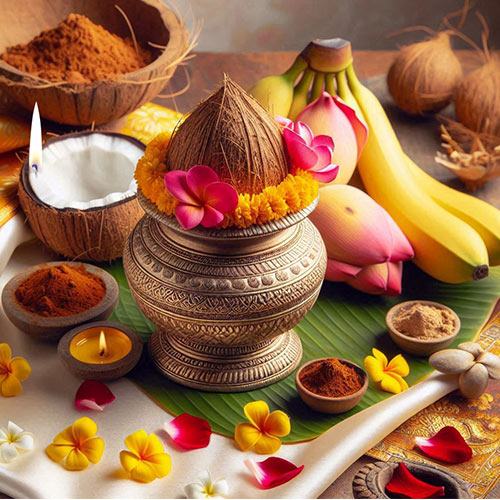

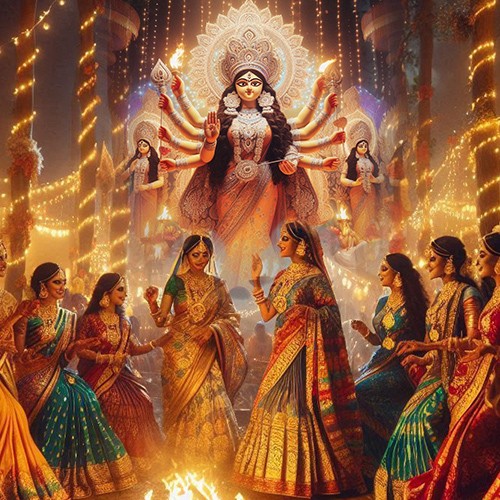
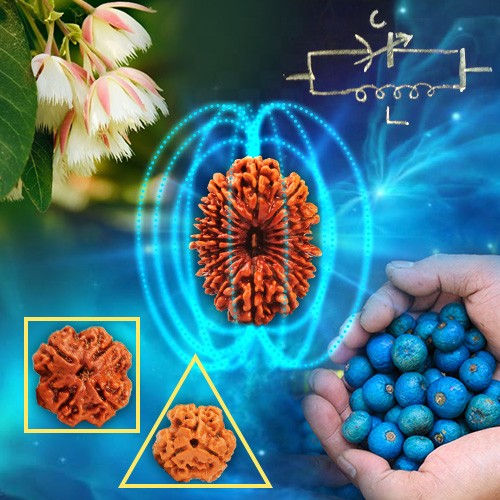

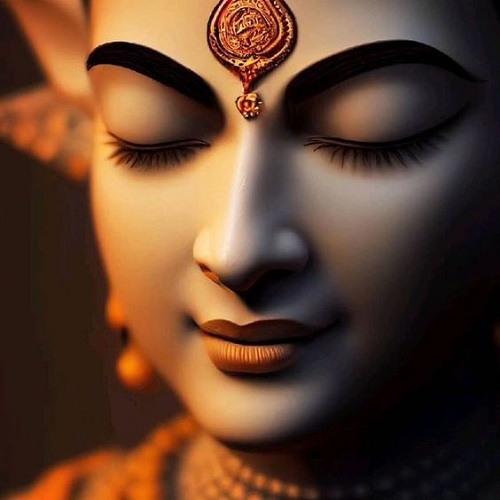
.jpg)
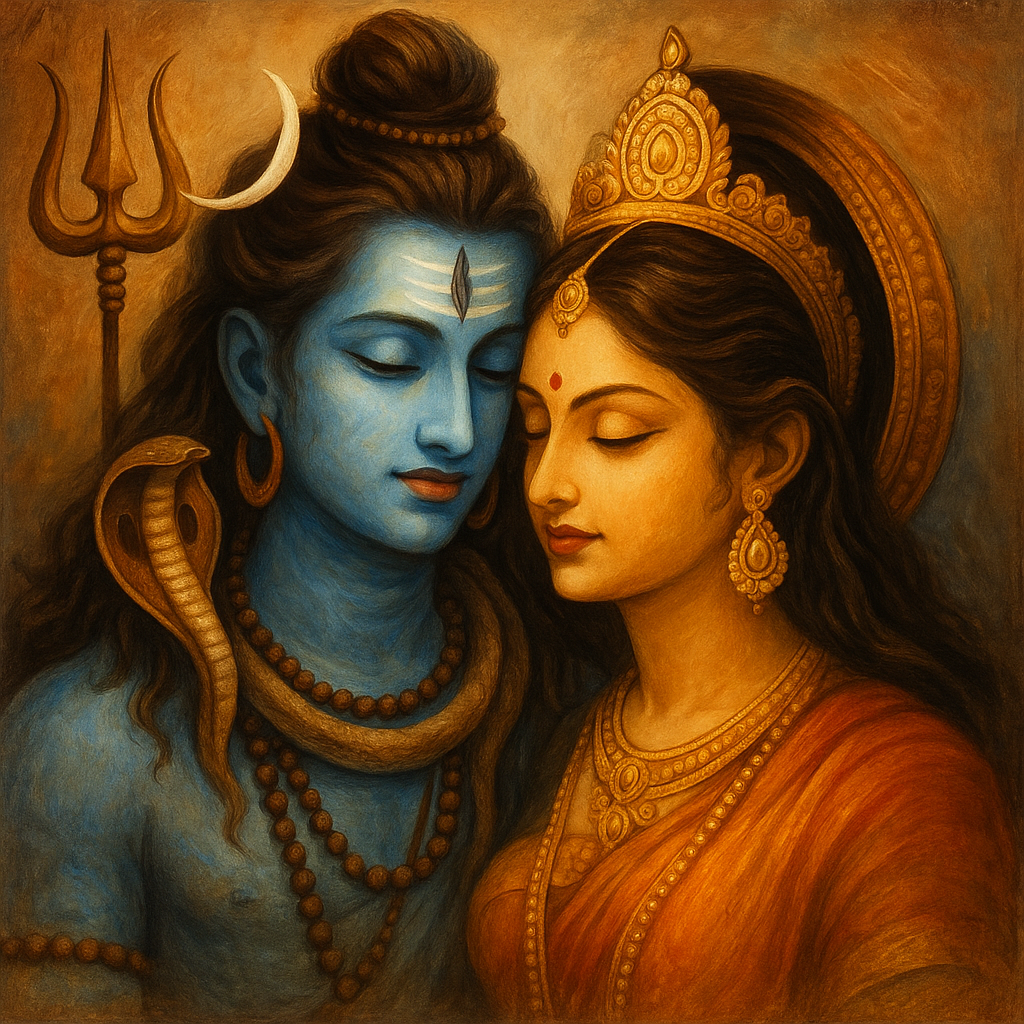
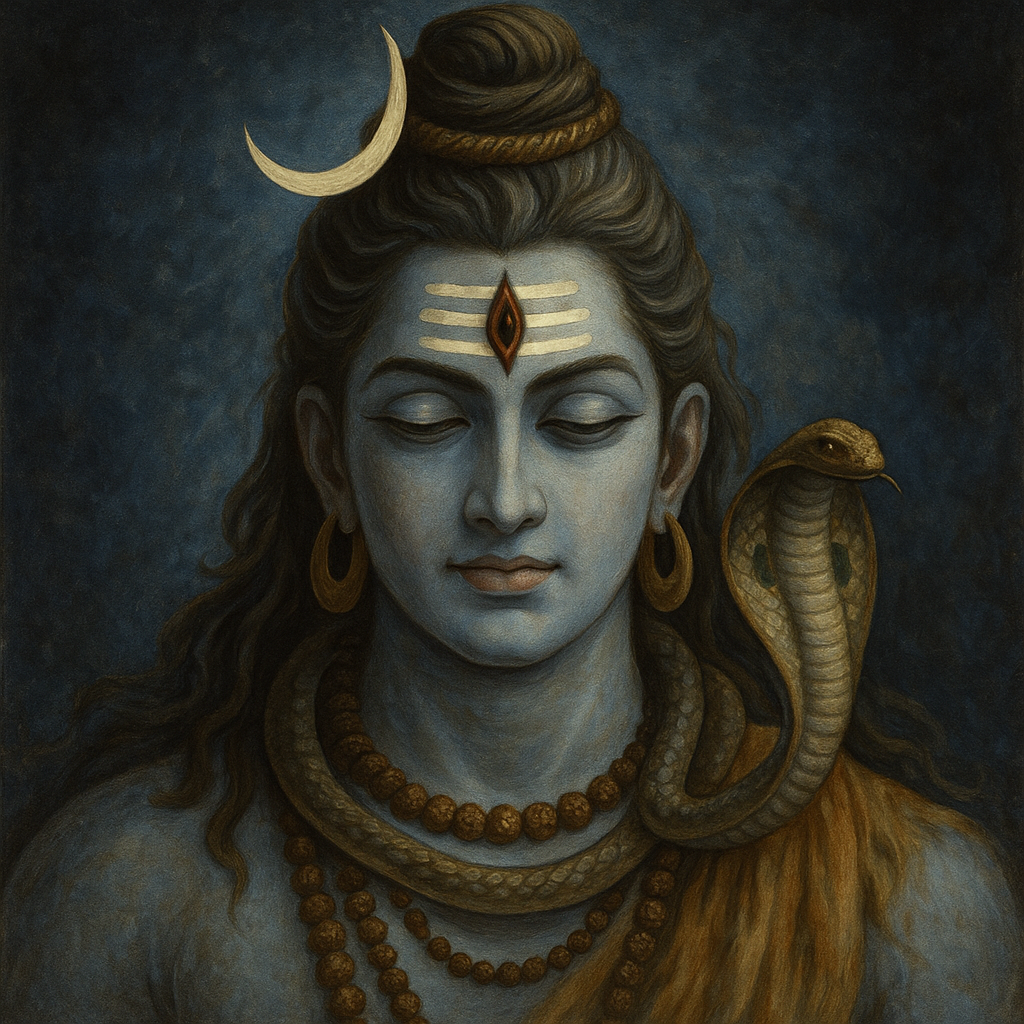
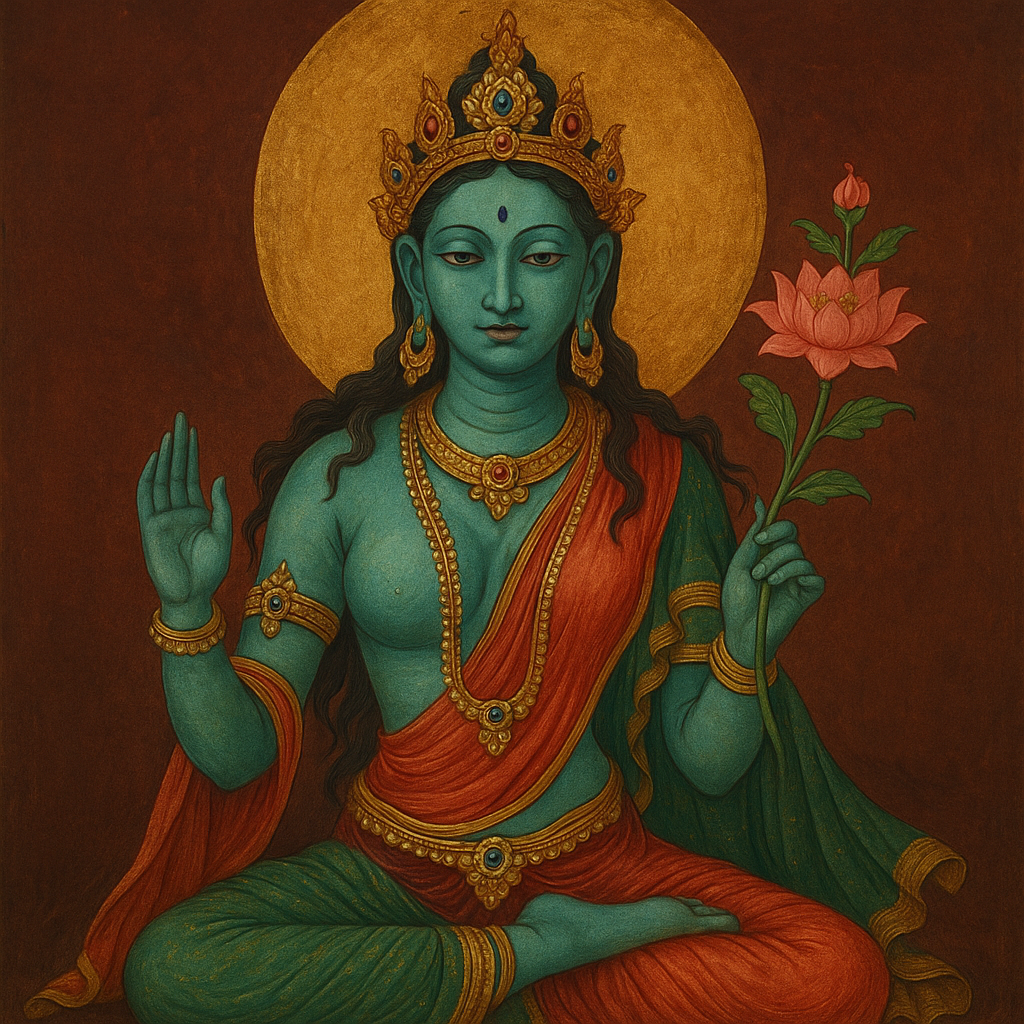
Comments 0
Leave your thought here